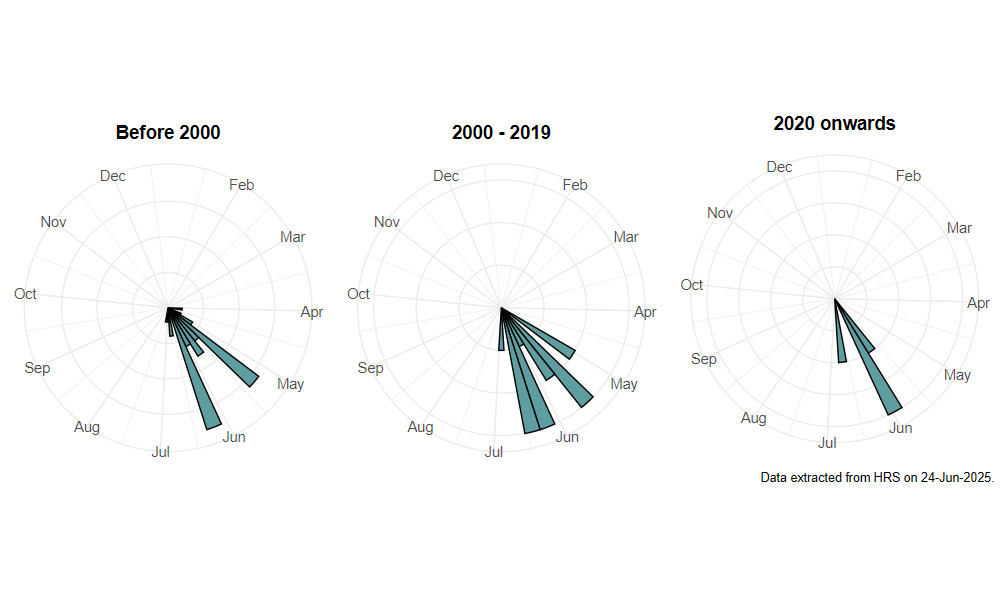Dasysyrphus hilaris (Zetterstedt, 1843)
Identification
Identification difficulty = 5. ![]()
![]() according to Ball & Morris, 20241
according to Ball & Morris, 20241
Synonymy
The taxonomic status of this species has yet to be completely resolved. The male genitalia appear to be distinct from either D. venustus or D. friuliensis, and its specific status may therefore be justified (Entwistle, 19952; Stubbs, 19963).
Biology
Very little is known about this species' biology. The larva can be expected to be aphidophagous, in common with others in the genus, and it seems likely that conifer plantations are favoured.
Flight period
The following plots show the number of unique records per week excluding those reported to be of immature stages.

Distribution
There is a scatter of records in northern Scotland, an aggregation in Yorkshire/Lancashire and a scatter of records from Hampshire and adjacent counties. The distribution of records is odd and may reflect recorder effort or diligence rather than a distinct clumping of populations.

-
Ball, S., & Morris, R. (2024). Hoverflies of Britain and Ireland. WILDGuides (3rd ed.). Oxford: Princeton University Press. ↩
-
Entwistle, P. (1995). Hoverflies north of Inverness. Hoverfly Newsletter, 20, 2–5. ↩
-
Stubbs, A. (1996). British Hoverflies. Second (revised and enlarged) supplement. Reading: BENHS. ↩